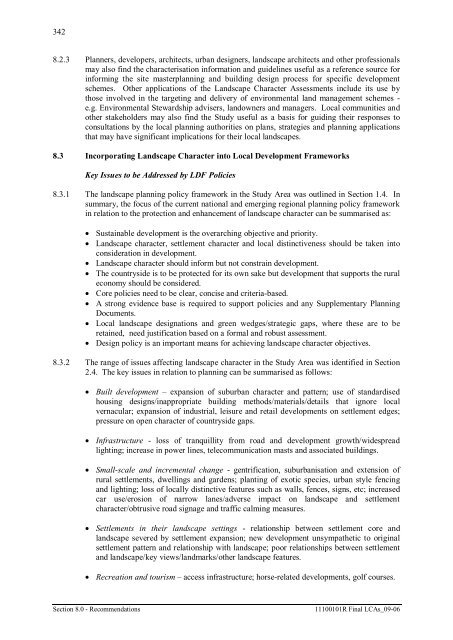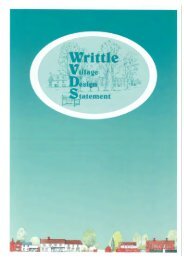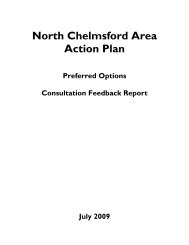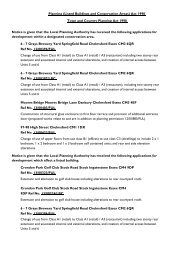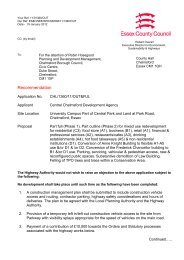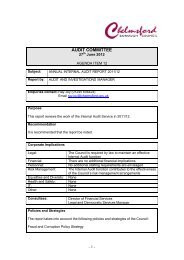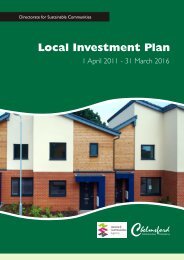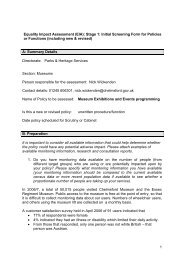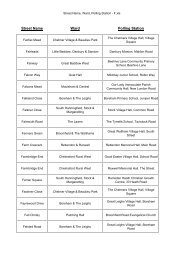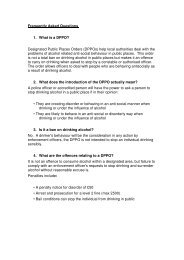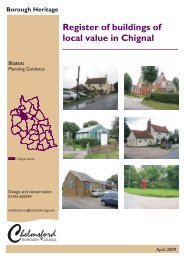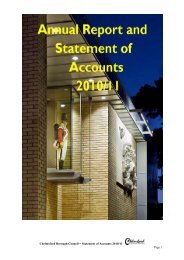Landscape Character Assessment - Chelmsford Borough Council
Landscape Character Assessment - Chelmsford Borough Council
Landscape Character Assessment - Chelmsford Borough Council
Create successful ePaper yourself
Turn your PDF publications into a flip-book with our unique Google optimized e-Paper software.
3428.2.3 Planners, developers, architects, urban designers, landscape architects and other professionalsmay also find the characterisation information and guidelines useful as a reference source forinforming the site masterplanning and building design process for specific developmentschemes. Other applications of the <strong>Landscape</strong> <strong>Character</strong> <strong>Assessment</strong>s include its use bythose involved in the targeting and delivery of environmental land management schemes -e.g. Environmental Stewardship advisers, landowners and managers. Local communities andother stakeholders may also find the Study useful as a basis for guiding their responses toconsultations by the local planning authorities on plans, strategies and planning applicationsthat may have significant implications for their local landscapes.8.3 Incorporating <strong>Landscape</strong> <strong>Character</strong> into Local Development FrameworksKey Issues to be Addressed by LDF Policies8.3.1 The landscape planning policy framework in the Study Area was outlined in Section 1.4. Insummary, the focus of the current national and emerging regional planning policy frameworkin relation to the protection and enhancement of landscape character can be summarised as: Sustainable development is the overarching objective and priority. <strong>Landscape</strong> character, settlement character and local distinctiveness should be taken intoconsideration in development. <strong>Landscape</strong> character should inform but not constrain development. The countryside is to be protected for its own sake but development that supports the ruraleconomy should be considered. Core policies need to be clear, concise and criteria-based. A strong evidence base is required to support policies and any Supplementary PlanningDocuments. Local landscape designations and green wedges/strategic gaps, where these are to beretained, need justification based on a formal and robust assessment. Design policy is an important means for achieving landscape character objectives.8.3.2 The range of issues affecting landscape character in the Study Area was identified in Section2.4. The key issues in relation to planning can be summarised as follows: Built development – expansion of suburban character and pattern; use of standardisedhousing designs/inappropriate building methods/materials/details that ignore localvernacular; expansion of industrial, leisure and retail developments on settlement edges;pressure on open character of countryside gaps. Infrastructure - loss of tranquillity from road and development growth/widespreadlighting; increase in power lines, telecommunication masts and associated buildings. Small-scale and incremental change - gentrification, suburbanisation and extension ofrural settlements, dwellings and gardens; planting of exotic species, urban style fencingand lighting; loss of locally distinctive features such as walls, fences, signs, etc; increasedcar use/erosion of narrow lanes/adverse impact on landscape and settlementcharacter/obtrusive road signage and traffic calming measures. Settlements in their landscape settings - relationship between settlement core andlandscape severed by settlement expansion; new development unsympathetic to originalsettlement pattern and relationship with landscape; poor relationships between settlementand landscape/key views/landmarks/other landscape features. Recreation and tourism – access infrastructure; horse-related developments, golf courses.Section 8.0 - Recommendations11100101R Final LCAs_09-06


